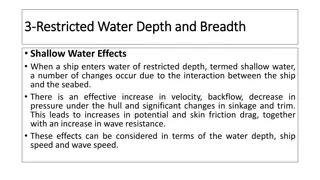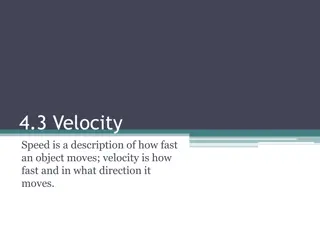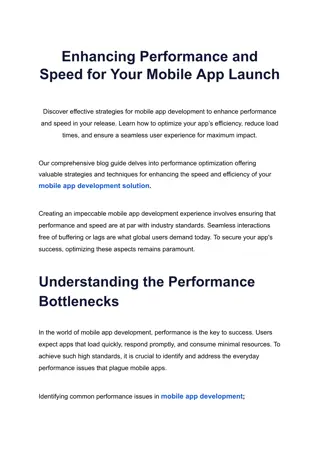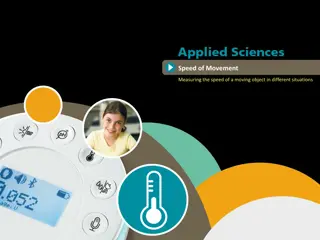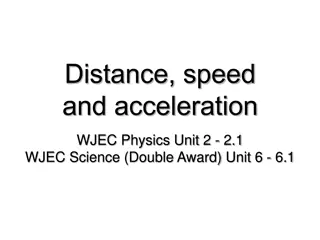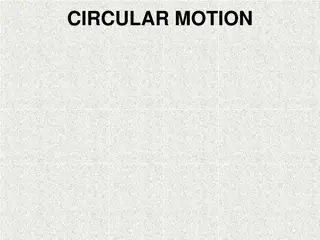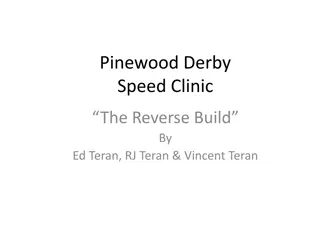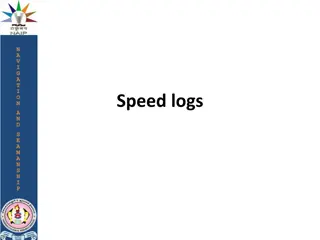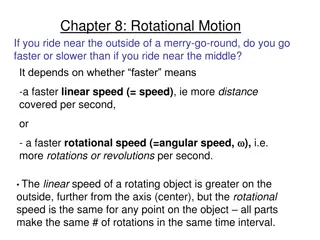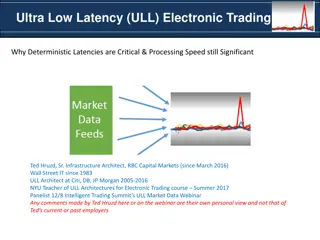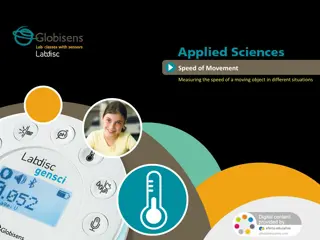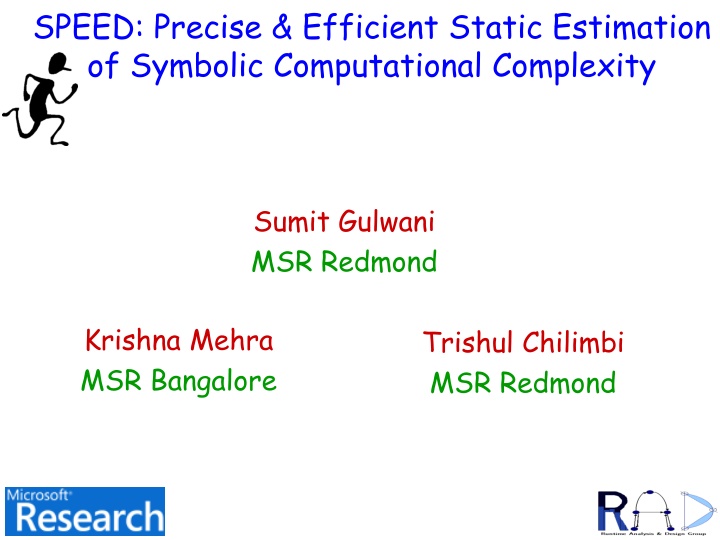
Efficient Estimation of Symbolic Computational Complexity
"Learn how SPEED provides precise and efficient static estimation of symbolic computational complexity, enabling the computation of complexity bounds for procedures and code fragments based on inputs and cost metrics. Discover applications, key challenges, and innovative solutions in this field."
Download Presentation

Please find below an Image/Link to download the presentation.
The content on the website is provided AS IS for your information and personal use only. It may not be sold, licensed, or shared on other websites without obtaining consent from the author. If you encounter any issues during the download, it is possible that the publisher has removed the file from their server.
You are allowed to download the files provided on this website for personal or commercial use, subject to the condition that they are used lawfully. All files are the property of their respective owners.
The content on the website is provided AS IS for your information and personal use only. It may not be sold, licensed, or shared on other websites without obtaining consent from the author.
E N D
Presentation Transcript
SPEED: Precise & Efficient Static Estimation of Symbolic Computational Complexity Sumit Gulwani MSR Redmond Krishna Mehra MSR Bangalore Trishul Chilimbi MSR Redmond
Problem Definition Compute symbolic complexity bound of procedures in terms of inputs (assuming unit cost for statements). Can use different cost metrics. Only count memory instructions Only count memory allocation instructions and weight them with memory allocated (space bound) Only count network instructions weighted appropriately (network traffic bound) Can also compute bound for interesting code fragments. code executed between lock acquire/release. 1
Applications Provide immediate feedback during code development Use of unfamiliar APIs. Code Editing. Performance Analysis Identify corner cases (unlike profiling) Embedded Systems Establish space bounds. 2
Two Key Challenges Hard part is to bound loops. This is equivalent to computing a bound on instrumented counter c using invariant generators. c := 0; while (cond) do S; c := c+1; while (cond) do S However the required invariants are hard to compute. Challenge 1: Control-flow in S leads to disjunctive, non-linear bounds, which in turn requires disjunctive, non-linear invariants. Key Idea 1: Multiple Counter Instrumentation Challenge 2: Iteration over data-structures in S requires reference to numerical properties of these data-structures. Key Idea 2: User-defined Quantitative Functions 3
Outline Key Idea 1: Multiple Counter Instrumentation Addresses issue of disjunctive and non-linear bounds. Key Idea 2: Quantitative Functions Addresses issue of bounds for loops that iterate over data-structures. 4
Example 1: Disjunctive Bound Example(int n, x0, z0) { c1 := 0; c2 := 0; x := x0; z := z0; while (x<n) if (z>x) x++; c1++; else z++; c2++; } Termination proof based on disjunctively well-founded relation. We can even compute bounds using following proof strategy: Number of times if-branch is executed (if at all): n-x0 Number of times else-branch is executed (if at all): n-z0 Therefore, total iterations: Max(0,n-x0) + Max(0,n-z0) 5
Example 2: Non-linear Bound int msize; // Assume(0 e1.len, e2.len < msize); Equals (StringBuffer s1, StringBuffer s2) { c1 := c2 := c3 := 0; e1:=s1.GetHead();e2:=s2.GetHead();i1:=e1.len-1;i2:=e2.len-1; while (true) { if (e1.arr[i1] e2.arr[i2]) return 0; i1--; i2--; while (i1<0 e1 null) { e1 := s1.GetNext(e1); i1 := i1+e1.len; c1++; c3 := 0; } while (i2<0 e2 null) { e2 := s2.GetNext(e2); i2 := i2+e2.len; c2++; c3 := 0; } if (i1<0) return (i2<0); if (i2<0) return 0; c3++; }; return 1; } Total iterations of 1st & 2nd inner loops: Len(s1) & Len(s2). In between any two iterations of inner loops, iterations of outer loop: msize Therefore total complexity is (1+msize)*(1+Len(s1)+Len(s2)) 6
Automatically Computing Counter Placement Total number of potential counter placements are exponential in number of back-edges. Hence a na ve search is expensive. Key Idea: Increasing counters and dependencies increases ability of an invariant generation tool to discover bounds. But cannot simply make all counters depend on each other. Need to find right set of dependencies that create a DAG. There is a quadratic (in number of back-edges) algorithm to compute an optimal counter placement. An optimal counter placement scheme uses minimal counters and miminal dependencies between counters. Generally, this leads to more precise bounds. 7
Outline Key Idea 1: Multiple Counter Instrumentation Addresses issue of disjunctive and non-linear bounds. Key Idea 2: Quantitative Functions Addresses issue of bounds for loops that iterate over data-structures. 8
Quantitative Functions Defined over tuple of abstract data-structures Len(L) : Length of list L. Pos(e,L) : Position of list-element e in List L. Semantics is defined by describing effect of data- structure methods on quantitative functions. Sequence of (conditional) assignments and assumes. Can also refer to unscoped variables (universally quantified). Data Structure Operation L.Append(e); L.Delete(e); Updates to Quantitative Functions Len(L)++; Pos(e,L) := Len(L); Len(L)--; if (Pos(e,L) < Pos(e ,L)) Pos(e ,L) --; Paper gives examples of quantitative fns for trees, bit- vectors, and composite data-structures, eg., list of lists. 9
Example 3: Data-structure Iteration BreadthFirstTraversal(List L): ToDo.Init(); L.MoveTo(L.Head(),ToDo); c:=0; while (! ToDo.IsEmpty()) e := ToDo.Head(); ToDo.Delete(e); foreach successor s in e.Successors() if (L.contains(s)) L.MoveTo(s,ToDo); c++; Inductive Invariant at back-edge of while-loop c Old(Len(L)) - Len(L) Len(ToDo) Len(L) 0 Len(ToDo) 0 This implies a bound of Old(Len(L)) for while loop. 10
Computing Invariants over Quantitative Functions Instrument a data-structure method call with its effect allowing quantitative fns. to be treated as uninterpreted. Instantiate unscoped variables with all appropriate terms. Use a linear invariant generation tool with support for uninterpreted functions. Abstract Interpretation based Technique. Use domain-combinators to [Gulwani, Tiwari, PLDI 06] combine Polyhedron abstract domain [Cousot, POPL 79] with uninterpreted fns domain [Gulwani, Necula, SAS 04] Constraint-based Invariant Generation Technique. [Beyer et.al., VMCAI 07] 11
Related Work Type system approaches for Resource Bound Certification Only verify as opposed to inferring bound annotations. WCET (Worst Case Execution Time) Analysis Focused on modeling low-level architectural details. For loop bounds, either require user annotation, or uses simple pattern matching or some simple numerical analysis. Termination Analysis Complexity Analysis provides more information, and can also bound other resources, e.g., memory space usage. 12
Conclusion & Limitations Applications of Symbolic Bound Analysis Interactive code development, Embedded systems Two Key Ideas Multiple Counter Instrumentation Helps compute non-linear and disjunctive bounds. Quantitative Functions Helps compute bounds that refer to numerical heap properties. Limitations: Concurrent Procedures 13





